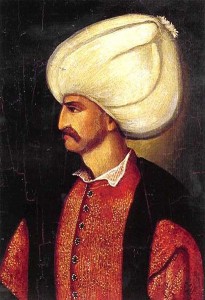Iraq and the Jewish People: The Modern Era
Part IX
In 1405, Turkish tribes conquered the region; the Safavids had control of the region from 1508 to 1534, when the Ottomans replaced them. The Ottoman rulers brought with them the dawn of a new day for Jewish community in the region. Sulaiman the Magnificent, the Ottoman sultan, entered Baghdad in 1534. The Jewish community in the area had deteriorated significantly over the previous centuries and stood at roughly 3,000. We can only speculate as to the reasons for this.
This new era was a positive one for the Jewish community. The ruler appointed to Baghdad in 1705 was quite benevolent and began to modernize Baghdad. Documentation exists which proves that in 1733 Baghdad’s Jews fought on the side of the Ottomans against Persian invaders. Unfortunately, plagues throughout this period (1743–1831) reduced the population.
Beginning in 1780, the Ottomans assigned good rulers to Iraq. In the middle of the 19th century, Jews in Islamic-dominated areas began to modernize, due to internal forces and the Alliance Israélite Universelle, which set up modern schools in the region. This led to Jews being fully involved in economic and even political leadership. Jews, as a modernized people, worked with the European powers and connected with the colonialists. The Jews then found themselves in an awkward position with the rise of local and Arab nationalism. In most places, following the Jews’ modernization and establishment in high positions, their communities fell apart with the rise of Nazism and the establishment of the state of Israel. This was true in all districts but Iran and Morocco.
In Iraq, a similar pattern emerged. The first modern Talmud Torah school was established in Iraq in 1832 and a modern yeshiva was established in 1840. By 1864, the modernizing Jews had written to the Alliance Israélite Universelle and asked to establish a school, reflecting a split in the community between the old-fashioned “yeshiva” demographic and the modern “Alliance” group. Unlike in Europe, all Jews in Iraq were mem-bers of Orthodox synagogue and practiced traditional Judaism. The Talmud Torah grew to have 3,000 students in Baghdad alone (with other similar schools in communities such as Basra and Kufa). After the establishment of the Alliance school in 1864, a school for girls was opened in Baghdad in 1890, another modern school was established in Baghdad, an Alliance school in Basra opened in 1893, and schools continued to open. Both types of schools were in essence creating a new Jew: an educated professional, destined to rise to the top in secular society.
Political events of the time were significant as well. The 1876 Ottoman constitution included Jewish representatives in the Ottoman parliament; the 1908 constitution set forth in Istanbul declared equal rights for all religious groups. Modernized Jews were engaged in professional careers, such as business and trading, occupying a central role in the society’s economic life.
However, the Ottoman Empire fought the Axis Powers and fell to British forces in 1917. At the same time, Zionist activity began to develop in Iraq—first with a small group, then expanding to a Jewish literary society in 1920. When the British introduced their puppet government in Iraq in 1920, a Jew—Sasson Hezkel—was head of the Finance Ministry. By 1921, the British Mandate was established in Iraq, and it was clear that the new Iraqi king would be coming from Arabia.


Leave a Reply